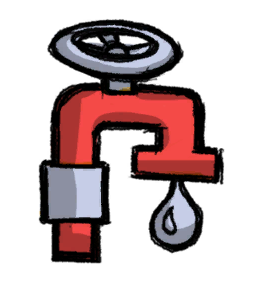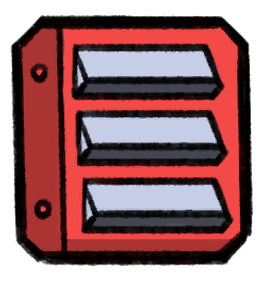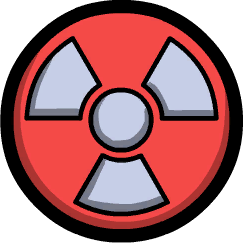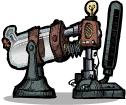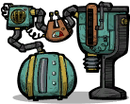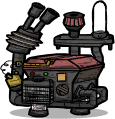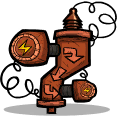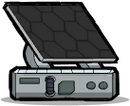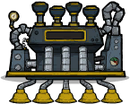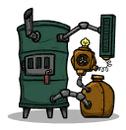Hydrogen Generator
Hydrogen Generator produces power when supplied with Hydrogen gas through a Gas Pump.
Hydrogen Generators are the most heat-efficient among continuous generators, producing only 5 DTU per Watt.
Pumping other gases into the generator will damage it; the use of a Gas Filter is strongly advised. Works great combined with an Electrolyzer.
Practicality
If your map was lucky enough to spawn a Hydrogen Vent, cooling down the hydrogen, hooking up a Gas Pump, and pumping its output into the Hydrogen Generators will provide some bonus energy. However, geysers have certain times when they do not produce anything, so your power room might fall temporarily dormant along with the Geyser. This can be solved by rationing and stockpiling hydrogen. A single Gas Reservoir has enough capacity to store 8000 kJ of power from hydrogen, as much as 200 Jumbo Batteries and it has no power runoff.
If the only guaranteed renewable source of Hydrogen is Electrolyzer, using the Hydrogen Generator as a dedicated power supply will not last long and will eventually lead to Oxygen overproduction, which can be hard to handle without expanding Duplicant count, which in turn will put strain on other systems, or processing it into rocket fuel, which is also energy-intensive, or venting Oxygen into space, or doing such unorthodox things as Longhair Slickster ranching.
Thus the best use of a Hydrogen Generator in combination with an Electrolyzer is an oxygen production setup that requires very little external power input. And, once properly balanced (by limiting pumps/generator energy, and ensuing reliable supply of hydrogen to the generator), can produce some excess Hydrogen or power.
Alternatively, hydrogen can also be used as a form of energy storage. A Gas Reservoir full of hydrogen and hooked to an array of automated Hydrogen Generators contains 8000kJ of electricity, as much as 200 Jumbo Batteries but without the energy drain from the batteries. Hence, a SPOM can be used to load balance the power coming from a variable source of energy such as Solar Panels.
Water-fuel
The electrolytic pathway converts 1 kilogram of water per second to around 280-740 Watts of power under the best circumstances (or even less with more than 2 constantly working pumps per electrolyzer and any filters).
An example of ideal circumstances is an electrolyzer room with one water pump, four electrolyzers and eight gas pumps. One pump for hydrogen, seven pumps for oxygen. This generates 448 g/s of hydrogen, which can run four hydrogen generators with slight excess. The setup consumes 2520 Watts (pump runs half the time) and 4 kg/s of water, and the hydrogen generators will produce 3200 W or 4800 W with Engie's Tune-Up. The excess hydrogen can be used to run a fifth generator intermittently. If this is done, then best case with Engie's Tune-Up will be come out to approximately 740 Watts per kg of water. Without Engie's Tune-Up, best case becomes about 280 Watts per kilogram of water.
The same kilogram of water per second can also be converted into Crude Oil and Natural Gas, which can fuel Petroleum and Natural Gas Generators, where it amounts to ~1421 Watts of power (assuming two constantly running pumps, Oil Well and refinery). This setup also has a plenty of potential for further efficiency improvement.
Thus, for the purposes of energy production, it is more preferable to utilize all available Oil Reservoirs before redirecting water to Hydrogen Generators.
Heat economy
Hydrogen Generators can be used to destroy heat wholesale, putting just 17 °C of excess heat into Hydrogen will be enough to counteract generator's heating, and everything beyond that is a bonus. It is not particularly powerful in that regards, burning 100 °C Hydrogen will destroy only 20 kDTU/s, but there is no problematic by-products either.





